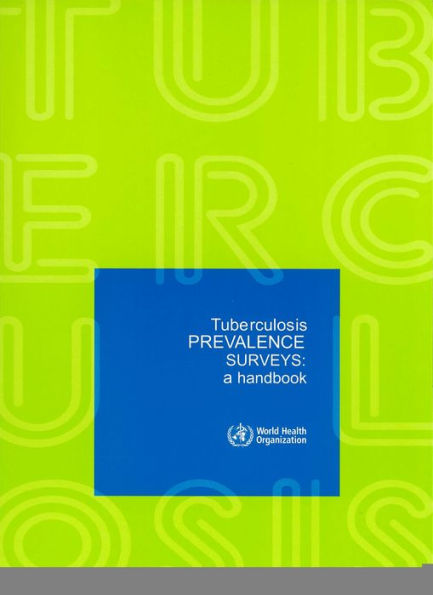Tuberculosis Prevalence Surveys: A Handbook
The first edition of this book Assessing Tuberculosis Prevalence Through Population-Based Surveys was published by the World Health Organization in 2007. Its aim was to provide guidance to countries about how to estimate the prevalence of tuberculosis (TB) disease through population-based surveys. Designed for TB experts, survey investigators, researchers and advisers at national and international levels, the "red book" (as it soon came to be known) explained the core survey methods, including calculation of sample sizes, strategies for screening and diagnosis, case definitions, field operations, and how to analyse and report results. This second (lime) edition will help users to justify, design, fund, implement and analyze a high-quality national TB prevalence survey; to repeat surveys that allow comparisons with earlier surveys; to maximize the value of the data collected during surveys; and to ensure standardization of methods across multiple surveys in more than 20 countries in WHO s African, Eastern Mediterranean, South-East Asia and Western Pacific regions.
1111471923
Tuberculosis Prevalence Surveys: A Handbook
The first edition of this book Assessing Tuberculosis Prevalence Through Population-Based Surveys was published by the World Health Organization in 2007. Its aim was to provide guidance to countries about how to estimate the prevalence of tuberculosis (TB) disease through population-based surveys. Designed for TB experts, survey investigators, researchers and advisers at national and international levels, the "red book" (as it soon came to be known) explained the core survey methods, including calculation of sample sizes, strategies for screening and diagnosis, case definitions, field operations, and how to analyse and report results. This second (lime) edition will help users to justify, design, fund, implement and analyze a high-quality national TB prevalence survey; to repeat surveys that allow comparisons with earlier surveys; to maximize the value of the data collected during surveys; and to ensure standardization of methods across multiple surveys in more than 20 countries in WHO s African, Eastern Mediterranean, South-East Asia and Western Pacific regions.
48.0
In Stock
5
1

Tuberculosis Prevalence Surveys: A Handbook
305
Tuberculosis Prevalence Surveys: A Handbook
305Paperback
$48.00
48.0
In Stock

Product Details
| ISBN-13: | 9789241548168 |
|---|---|
| Publisher: | World Health Organization |
| Publication date: | 11/01/2011 |
| Series: | Nonserial Publications Series |
| Pages: | 305 |
| Product dimensions: | 7.10(w) x 9.40(h) x 1.00(d) |
About the Author
From the B&N Reads Blog
